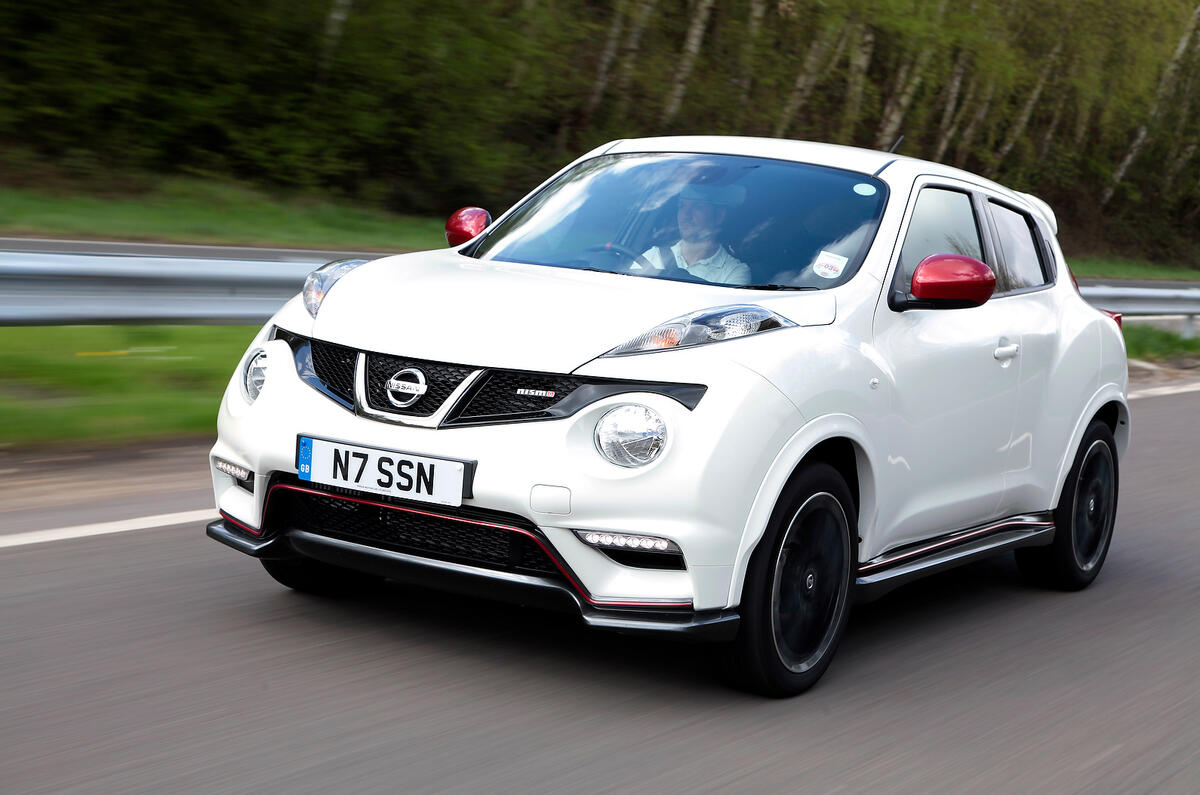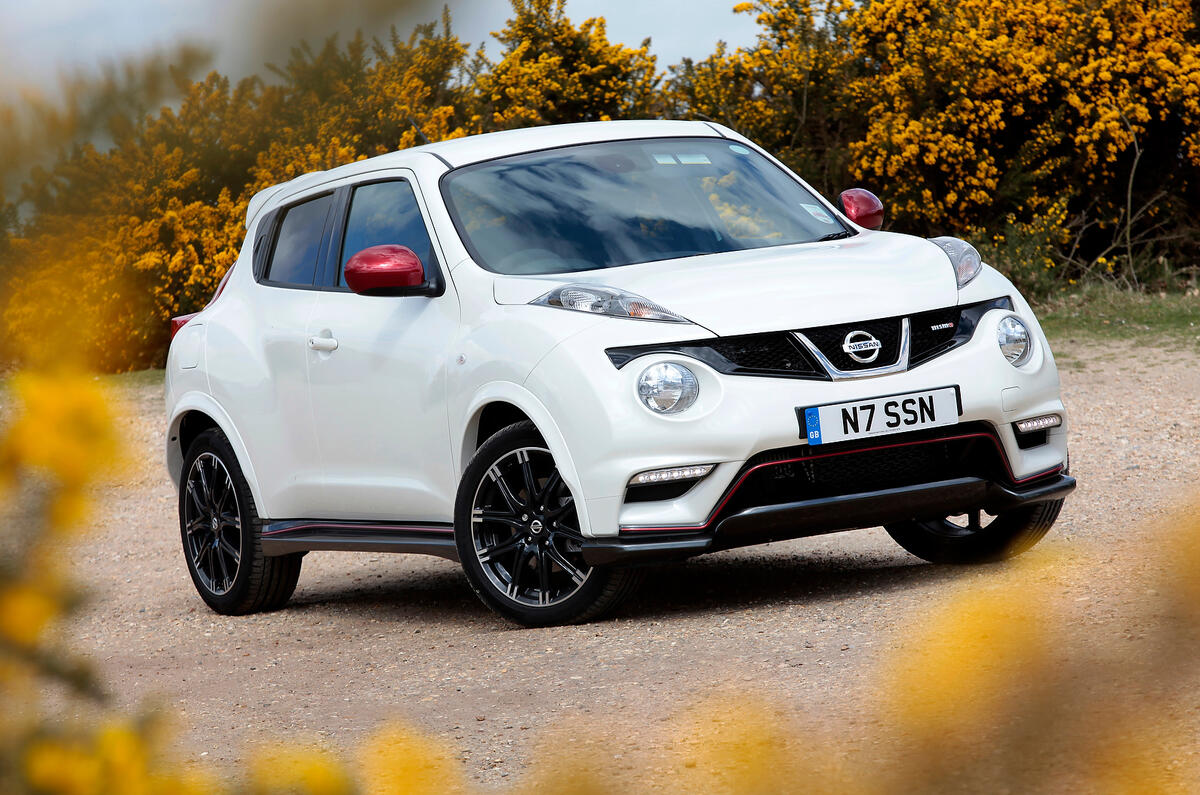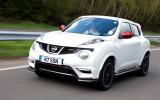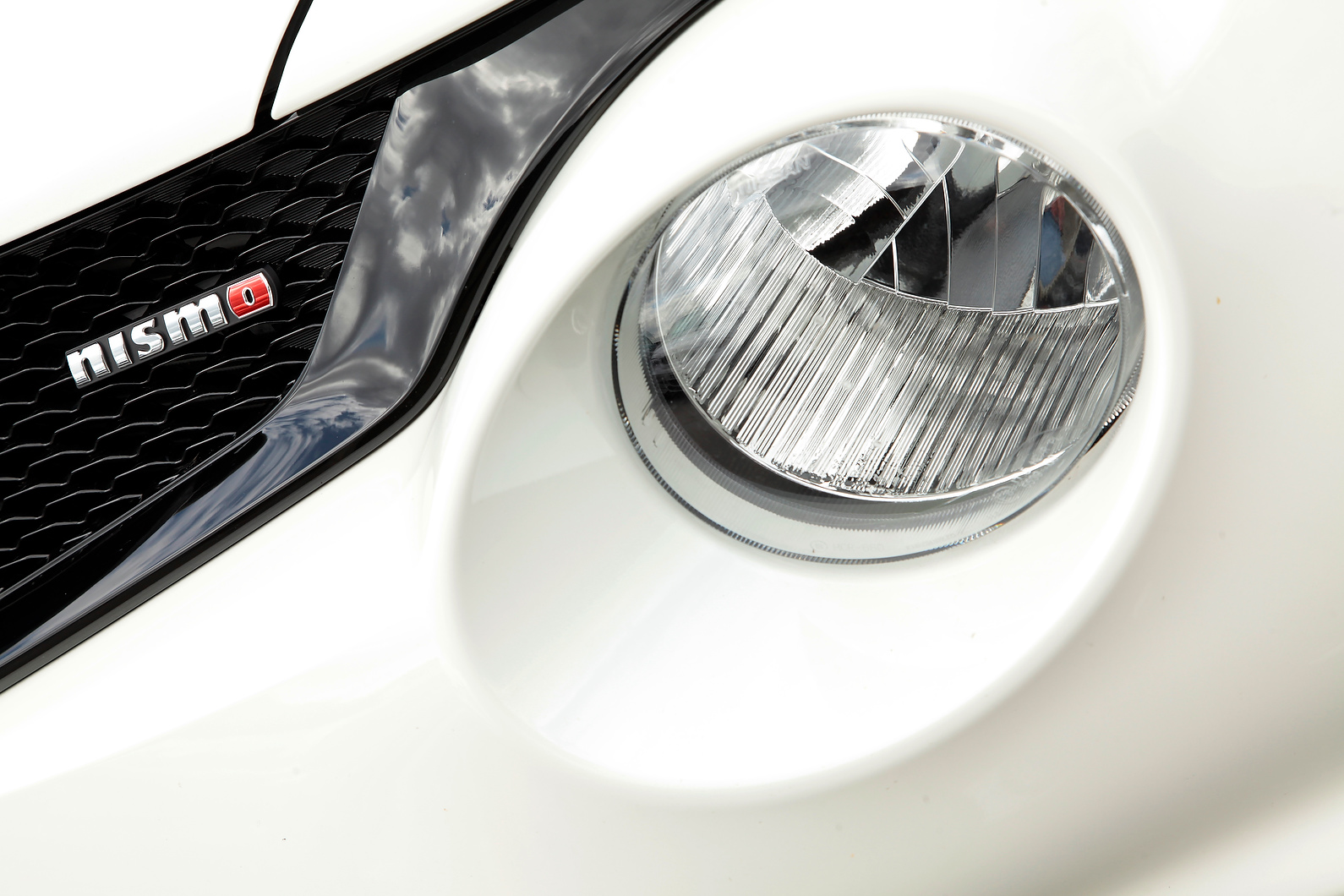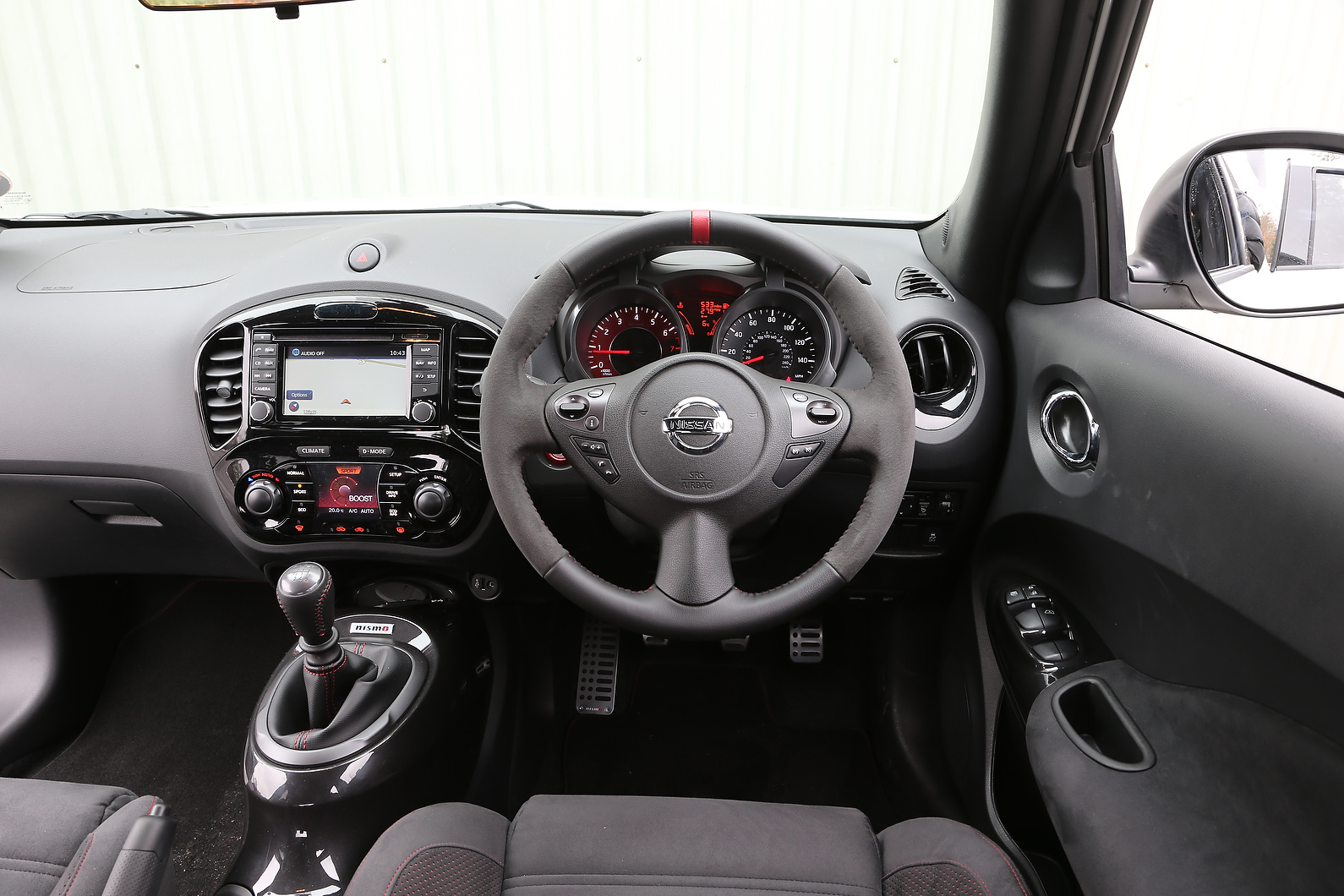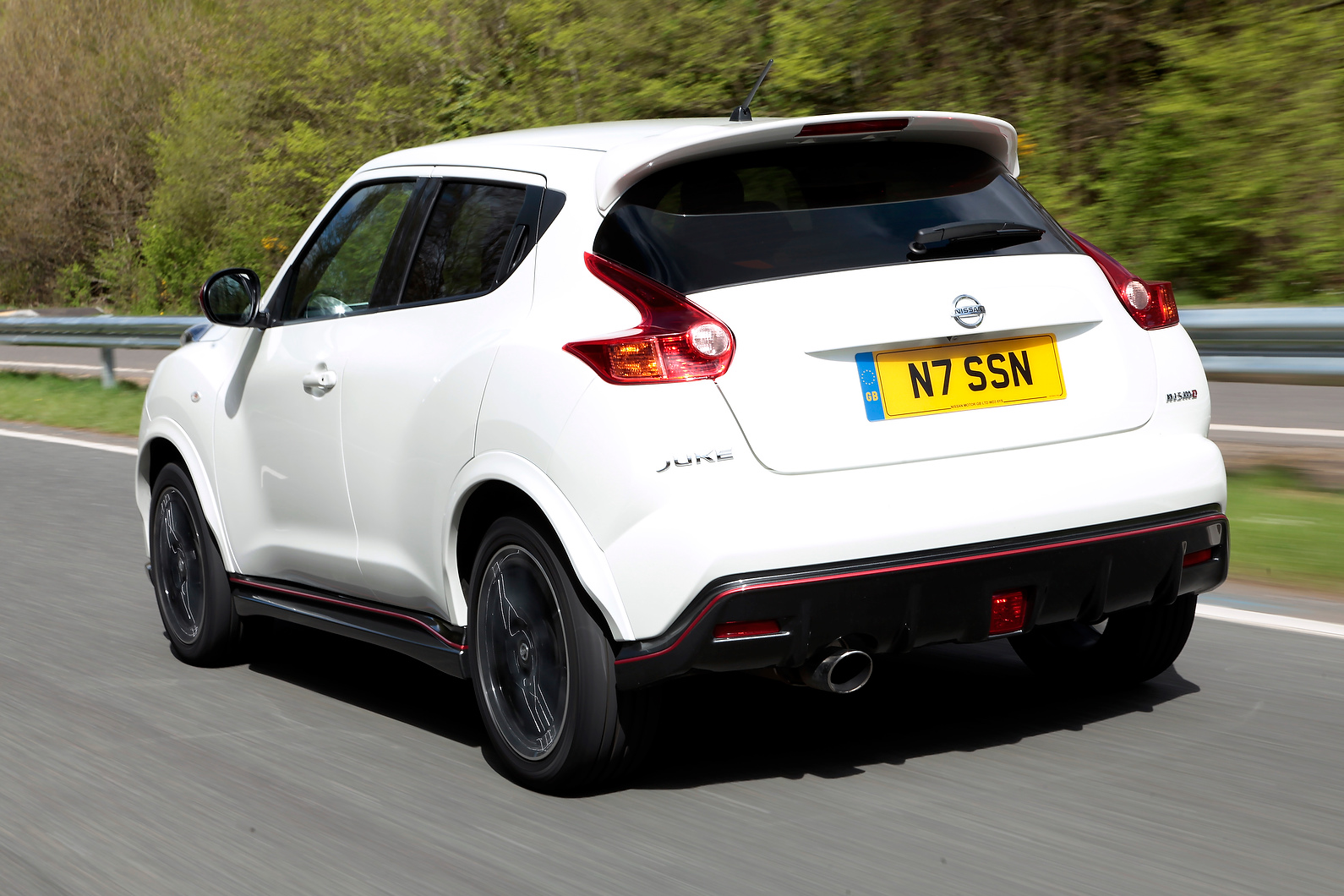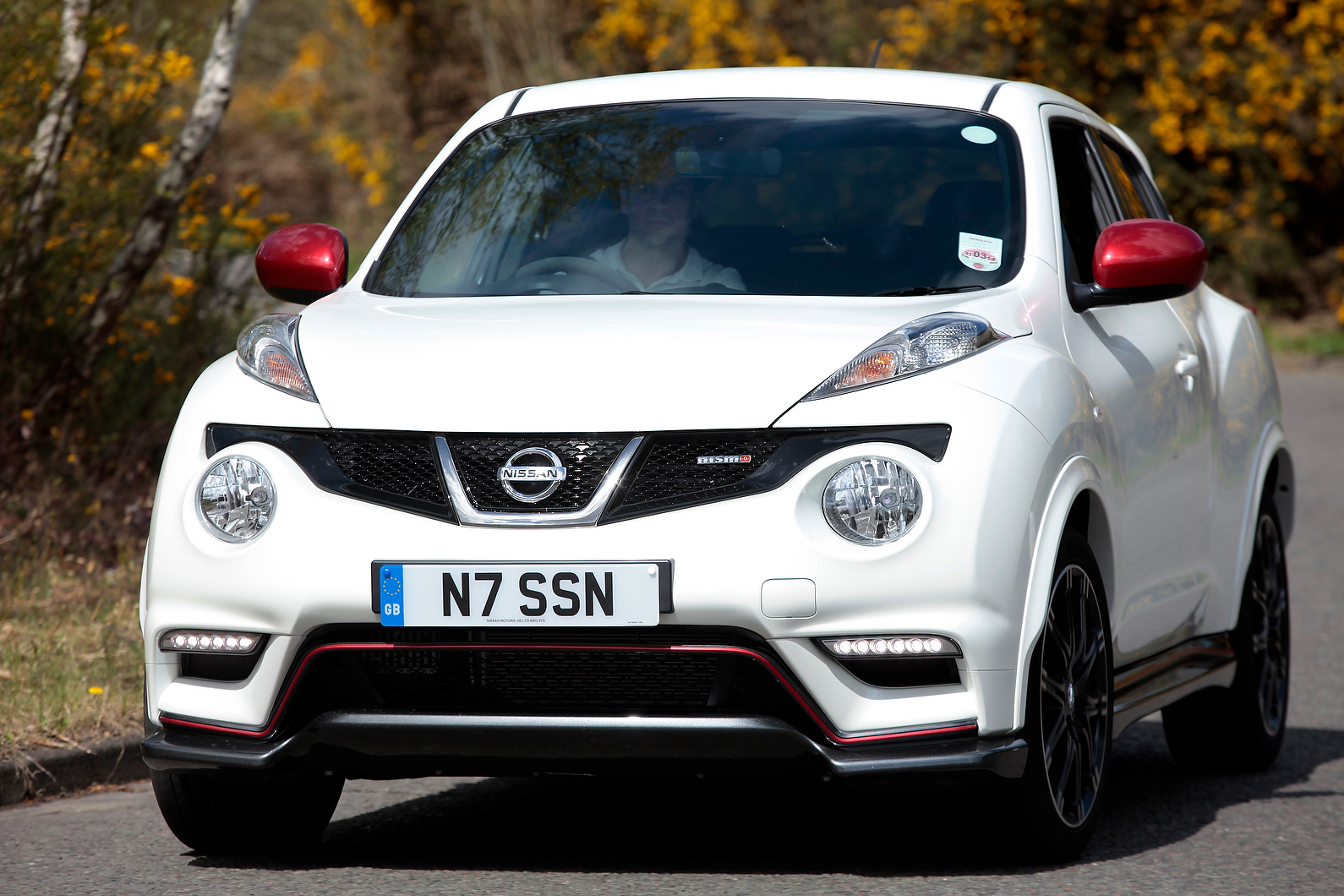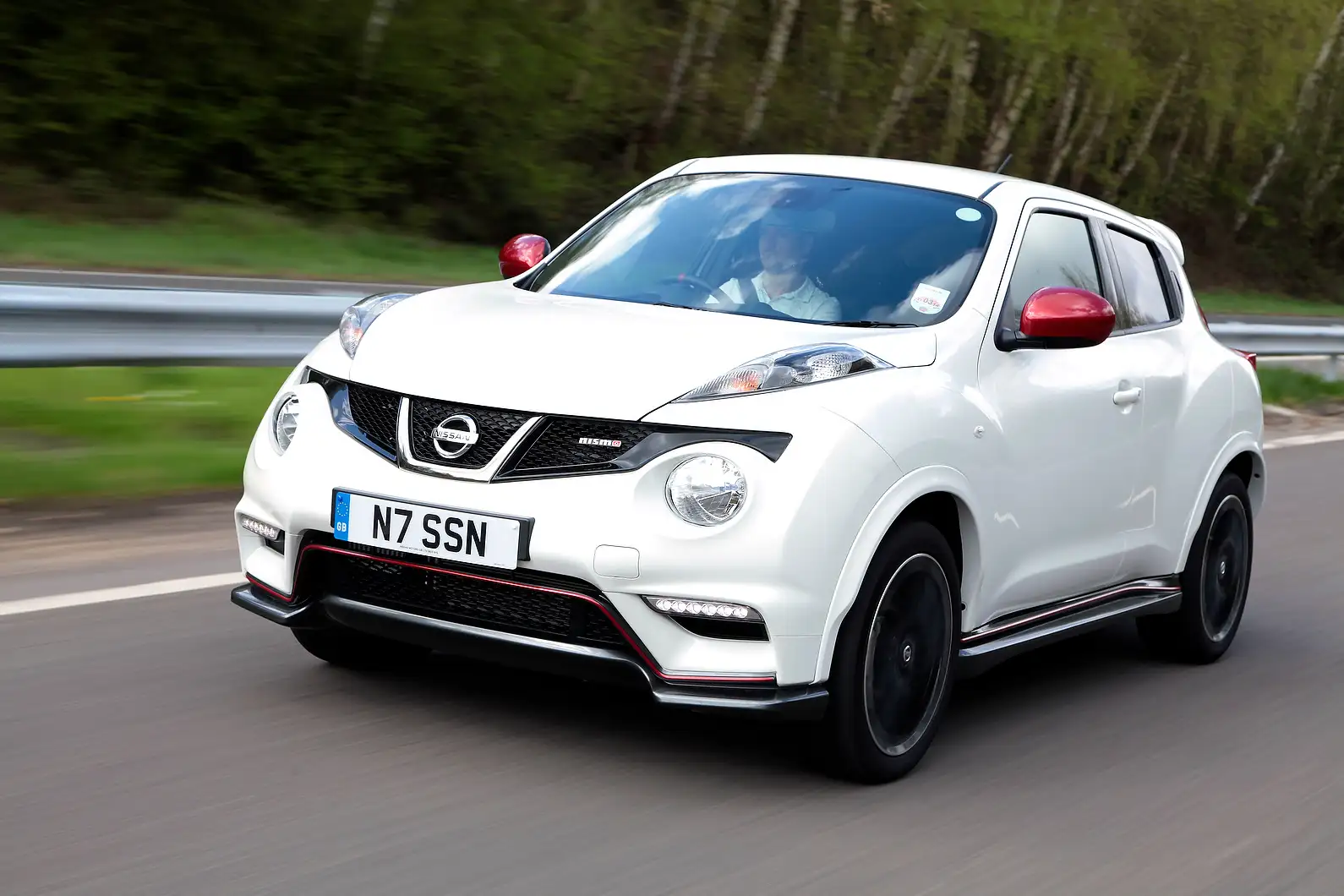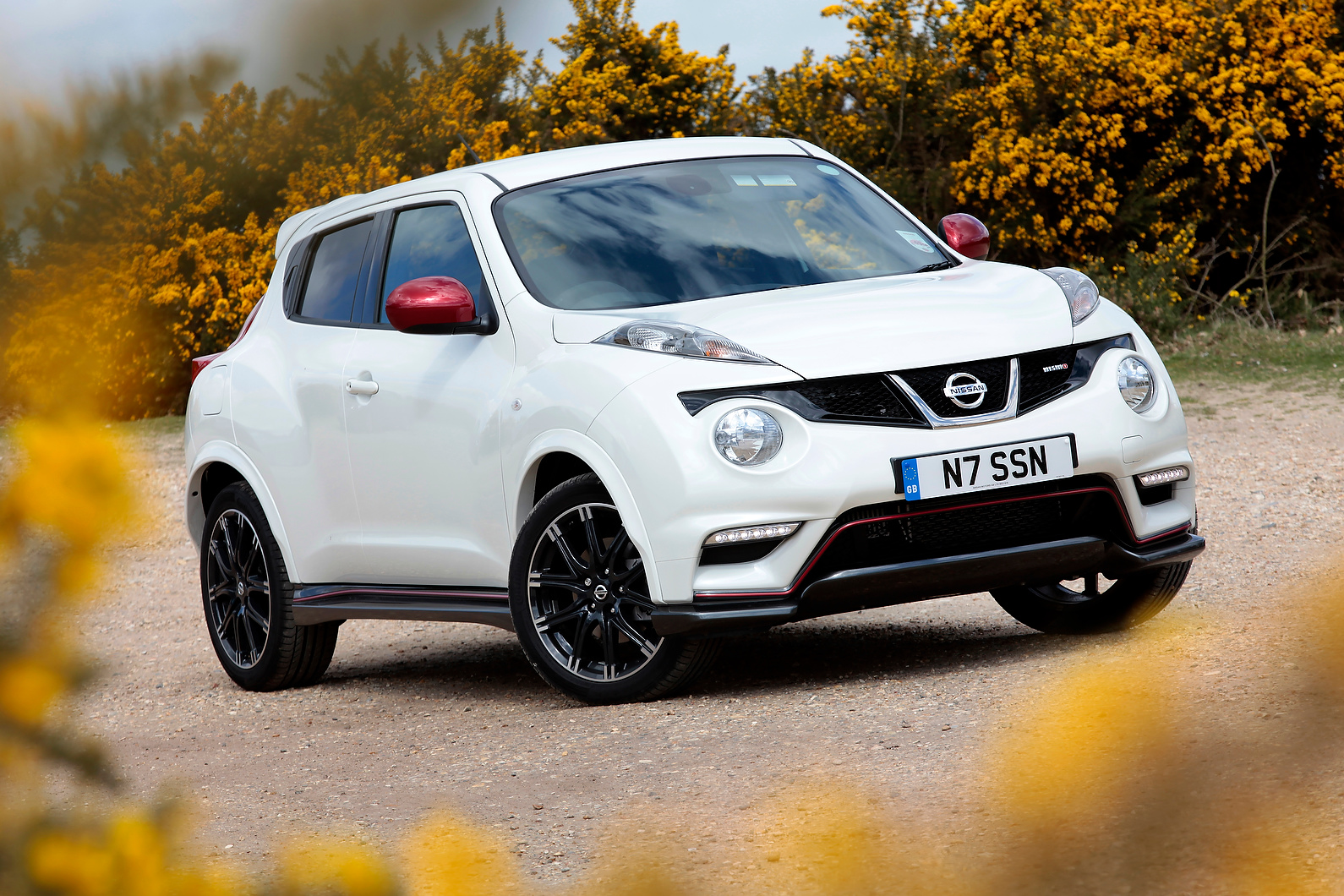If you thought that the Nissan Juke Nismo would be something of a half measure in terms of sheer punch, think again.
The Juke Nismo would comfortably hold its own in most traffic light grands prix, running nip and tuck with our new hot supermini class leader, the Fiesta ST, right up to 100mph. It’s a genuine sub-7.0sec prospect to 60mph, and our time makes a mockery of Nissan’s 7.8sec official 0-62mph claim. It’s also more than a second quicker into three figures than the previous Renault Clio Cup.
No damp squib, then. Once you select Sport mode on the NDCS, the Juke’s turbocharged four-pot develops sharper throttle response – provided you’ve got the turbo spinning.
That turbo takes a little bit of rousing at low revs, as our in-gear acceleration numbers show, but it has a predictably large swell of mid-range torque in all driving modes. More than enough, often, to trouble the maximum traction levels of the front wheels.
There’s a real edge to the engine’s voice, which becomes harder and more metallic as the revs rise although never bothersome in its harshness. You’ll like listening to this motor, which can’t always be said of engines of its kind. And its willingness to pile on speed above 4000rpm is also impressive for a small-capacity turbo. The limiter doesn’t chime in until 6750rpm, and you can get quite close to that threshold before its lungs begin to run short of air.
The gearlever is quite short of throw and substantial in feel, and it engages ratios with good positivity. The Nissan Juke is short in the wheelbase and rides high, but it is well controlled in an emergency stop. During our braking tests, it came to rest from 70mph in exactly 45m – a result that would do any hot hatchback credit.
You'll find there's a substantial premium if you want to go for the automatic version of the Juke Nismo, however, and it would be if all you got for your extra money was an automatic gearbox.
What you actually get, however, is Nissan’s continuously variable transmission (CVT) – operable in manual mode via seven ‘steps’ and tuned by Nismo for more sporting changes – combined with a four-wheel drive system, an electronic torque vectoring system, a multi-link independent rear suspension set-up and a slightly larger fuel tank.
The CVT has a torque converter with full lock-up, a seven-speed ‘manual’ mode and an operational range in automatic mode of anything from 5.7mph to 33.8mph per 1000rpm. The Nissan’s all-wheel drive system is operated by a hydraulic pump but is controlled electronically and can send up to 50 per cent of power to the rear wheels.
That power can then be forced to a loaded outside wheel by the brake-actuated torque vectoring system, which can help counteract any understeer. The four-wheel drive model’s multi-link rear suspension set-up replaces the front-drive Nissan Juke Nismo’s torsion beam. The multi-link consists of two lateral links and one trailing arm, and is adjustable for wheel camber.
If you have a particular desire for an automatic then it's your only option, but it's worth bearing in mind that it's slightly slower and less efficient than the manual version.


